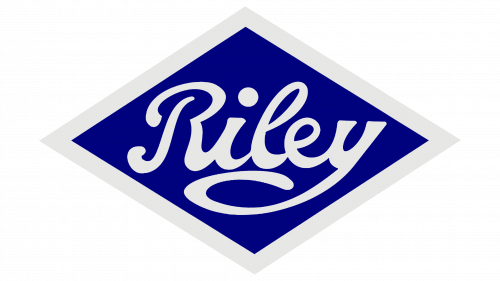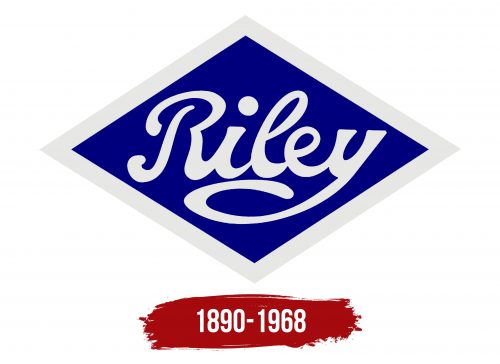The Riley logo matches the elegant style of the company that produced prestigious cars. It is a visual embodiment of the brand’s mission, combining classic late 19th-century design with modern technologies to achieve perfection.
Riley: Brand overview
The automobile company was founded in Coventry, England, in 1890. William, Victor, and Allan Riley, brothers, started the business. The company’s first focus was making bicycles, which was a popular enterprise then.
1896, the manufacturer began producing tricycles with De Dion engines, marking its entry into the motorized transportation industry.
The brand debuted its first automobile in 1898. Although it was not a commercial success, the compact, single-cylinder car set the stage for future growth in the automotive sector.
In 1907, the company unveiled its first four-cylinder vehicle. This model was more popular and contributed to its growth as a high-quality automaker.
During the 1920s, the business saw considerable personal development. The company started making sports vehicles, which became well-known quickly because of their elegant styling and excellent performance. The Nine, first released in 1926, was especially well-received and helped solidify the company’s market positioning.
The manufacturer kept refining its sports car lineup in the 1930s. The brand’s reputation increased as models like the Imp and MPH participated successfully in several races, including the 24 Hours of Le Mans.
The Great Depression, however, had a detrimental effect on the business’s financial standing. The company was bought out by Morris Motors in 1938 and joined the Nuffield Organization.
After civilian car production was suspended during World War II, the focus shifted to producing military hardware.
After the war, the company returned to making cars as a member of the Nuffield Organization. In 1952, it joined the British Motor Corporation (BMC) due to the Nuffield Organization’s merger with the Austin Motor Company.
The 1950s and 1960s were difficult for the brand. Even though the business kept making cars, they progressively lost their distinctiveness and were just rebadged versions of previous BMC models.
The production of the brand’s final vehicle, completed in 1969, marked the end of its nearly 80-year history in the automobile business.
Meaning and History
What is Riley?
This British automaker from Coventry, England, also produced bicycles. The brand was known for creating premium cars that skillfully combined functionality with refined style. The cars were celebrated for their sporty qualities and were beloved by enthusiasts for their speed and handling. The brand’s offerings included small family cars and larger luxury models, all distinguished by unique stylistic elements such as the grille design. The company was a notable presence in motorsport, winning numerous races. Over its existence, the company experienced several ownership changes and mergers, eventually becoming part of larger automotive firms.
1890 – 1968
The vintage company Riley used a retro-style logo, reflecting the era when it first began its journey under the leadership of William Riley Jr. The vintage feel is evident in all aspects, from the simple geometric shape of the base to the elegant handwritten font.
Designers placed the brand name in a large dark blue diamond. Standing in one corner, the figure creates a sense of balance, stability, and steadfastness. It also reflects vehicles’ energy, as thin gray outlines on the edges of the diamond imbue it with dynamism. Straight lines combined with sharp angles convey the meticulousness characteristic of the British manufacturer of bicycles and cars.
The simplicity of the geometric shape contrasts with the intricate design of the “Riley” inscription. The brand name uses a vintage handwritten font characterized by:
- Smooth curves and rounded edges
- Absence of sharp angles
- Uneven stroke thickness
- Decorative thickenings at the ends of some letters
- An open form of “R”
- A curved tail of “y,” extended to the left
These nuances make the inscription visually light and dynamic, conveying the energy of fast-moving cars. The retro font highlights the company’s rich historical heritage, established in the late 19th century.
Designers made the word “Riley” gray to ensure it stands out on the dark blue background. Additionally, gray symbolizes calmness and stability, while blue symbolizes eternity and nobility. This is a fitting combination for a vehicle manufacturer.





